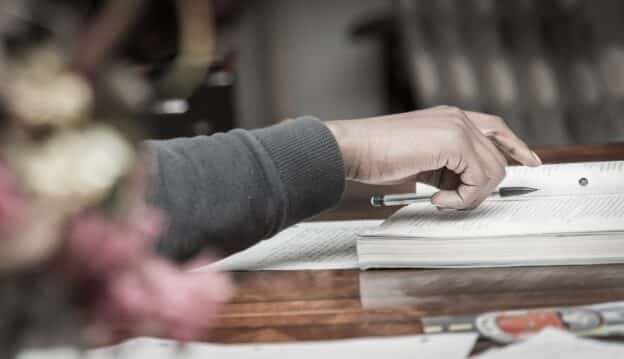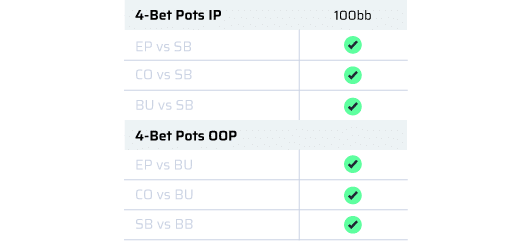Double Board Bomb Pots are exploding in popularity at high-level tournaments, and the WSOP 2025 proved they’re here to stay. One standout performer across both events is Xixiang Luo, whose back-to-back victories show that success in this format relies heavily on strategic skill and not just luck and variance.
In today’s blog, we’re looking into an intriguing situation involving none other than 17-time Bracelet winner Phil Hellmuth.
Assessing the Flop Situation
It’s the first day of the tournament and players have reached level 10. The hand starts with eight players posting an ante of 1,500 chips, making the pot 12k going to the following boards:
7♥5♥4♦ (Top)
Q♦T♥6♥ (Bottom)
These are two highly dynamic boards, where turns and rivers frequently shift the nuts. Consequently, early position players often check at a high frequency, opting to check-raise strong hands. This reduces the Stack-to-Pot-Ratio (SPR), mitigating the disadvantages of playing out of position on difficult runouts.
Which hand classes could bet?
With two hearts on each board, both bluffs and value hands should gravitate towards this suit, with the A♥ being crucial. Solvers consistently confirm this: on two-toned boards, betting hands strongly prefer holding at least one card of the relevant suit.
Let’s look at a hand example using a single-board example from our PLO Trainer, utilizing one of its key features: the filtering function.
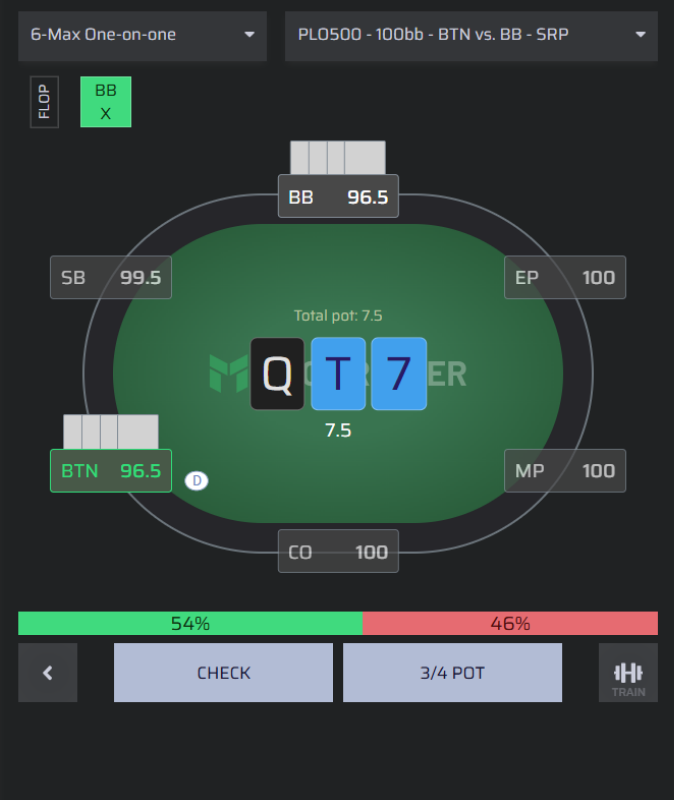
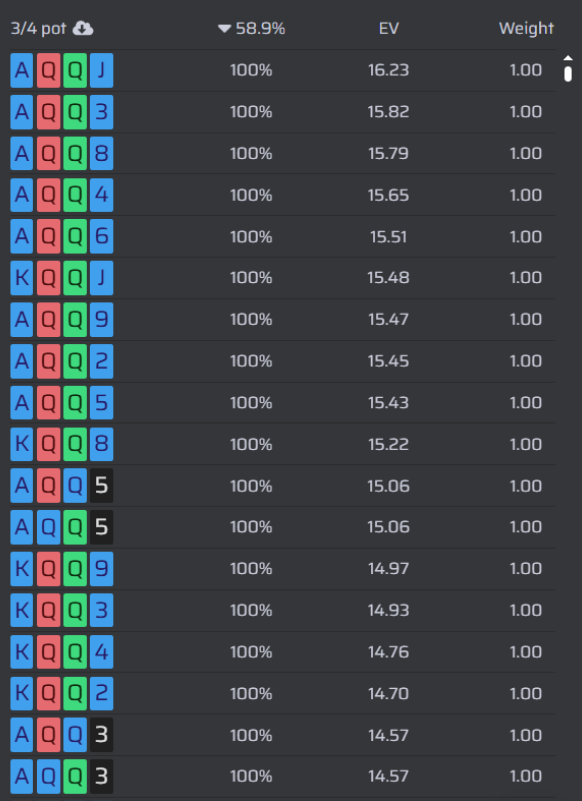
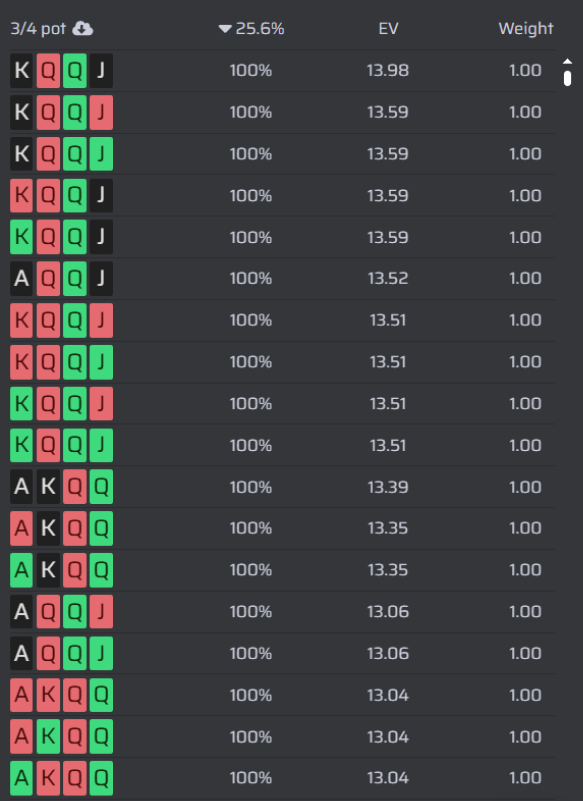
How do we apply this in the context of Double Board?
In double board, the more static board drives the action. This means that everything else being equal, more bets should come from the hands relevant to the more static board, in this case the 754, which already allows for a straight.
This is based on the fact that made hands on a more static board will have better equity and playability than made hands on a dynamic board. When comparing the nut hands on each board, in this case, 86xx and QQxx, the former comes out a slight favorite (51%). A lot of QQ-combos will have to make a running full house to beat 86 on the top board. On the other hand, 86xx will often have straight opportunities to draw out on a set of queens on the bottom.

Hellmuth’s Hand: The Setup
The hero of this hand is no one less than Phil Hellmuth, winner of 17 WSOP bracelets and one of the most successful poker players of all time.
Hellmuth starts the hand from the BB with a stack of around 60,000 which translates to an SPR of 5. At this stack depth, winning the antes signifies a big win and players can no longer afford to wait for big hands. On the flipside, 8 players are dealt in, so there is quite some risk to betting marginal hands in the hopes of taking down the antes uncontested.
If Hellmuth does get his money in on the flop, he will need a little more than 45% (heads-up) equity to break even.
Hellmuth, holding J♣8♣7♦6♦, has:
- Nut straight on the top board.
- A pair with a weak gut shot on the bottom.
- Backdoor diamonds on each board.
He bets 8,000 into the 12,000 pot.
A few things have to be said about Hellmuth’s hand:
With only a gut shot on the bottom board, it is not a favorite against other 86xx hands, which could result in him getting “quartered” (winning only a quarter of the final pot by losing one board and chopping the other).
His playability and visibility are very bad, mostly as his hand cannot significantly improve. There will however be many cards that could make things difficult down the road, such as any heart or a board pair. Higher straights could come in on the top board and a card like a King could render the gut shot on the bottom almost useless.
In most multiway scenarios, Hellmuth doesn’t do well either and being out of position against two opponents, the playability of his hand drops further.
Here are the equities of Hellmuth’s holding (J876) against hands that might call or raise him:
86xx
♥♥
QQxx
TTxx
7432
J876
45%
48%
52%
55%
61%
Betting J876 in this spot is highly questionable. This hand can rarely be a significant favorite and will almost always be played out of position with poor playability. While betting offers a chance to scoop the antes uncontested – a fantastic outcome – the risks are substantial.
Against seven other players (assuming the SB checked their entire range), these are the frequencies of at least one player having a hand of the respective strength bucket:
Hand
86xx
♥♥
TT
Frequency
26%
87%
14%
14%
If all of these hands continue, Hellmuth’s fold equity is a paltry 7%. While the weakest draws should probably not call his 8k-bet, it is easy to see that Hellmuth cannot expect a lot of folds here.
Hellmuth’s sizing choice:
Speaking of the 8k bet, the classic approach would be to either bet small or pot in a low SPR situation. The committing pot-sized bet typically fits a hand with good equity but low playability. On the other hand, a small bet is used for bluffs or strong hands with good runouts.
Consider a classic single-board example: a top two pair without additional backup in a Small Blind vs. Button 3-bet pot. Such a hand is strong enough to bet pot, as it aims to avoid playing turns and rivers with significant money behind.
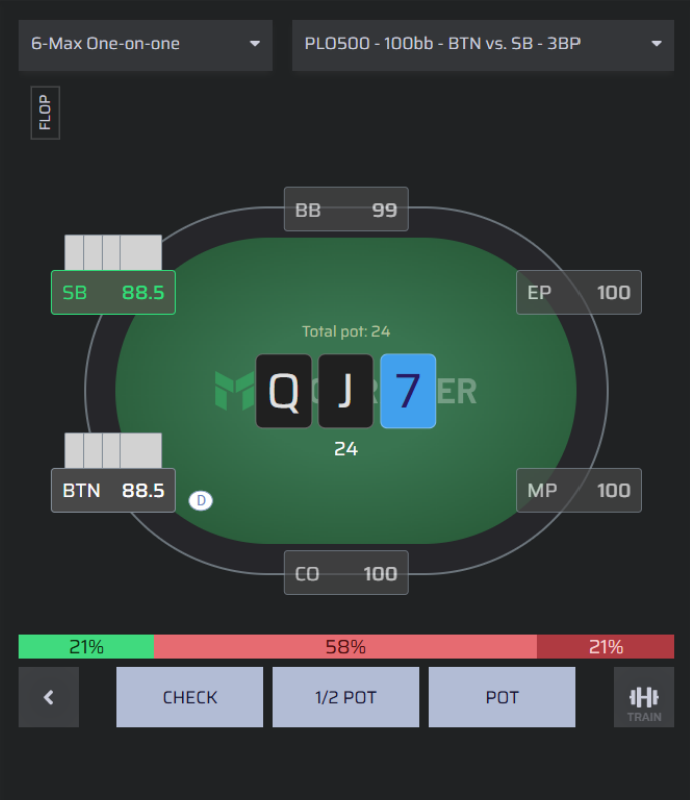
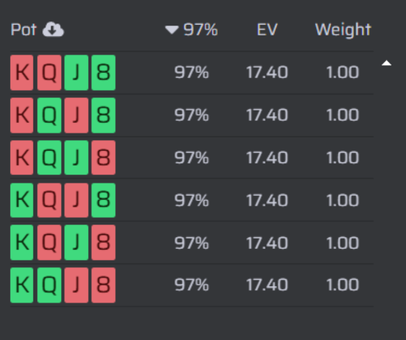
If Hellmuth gets raised after betting 8k, he will hardly be able to fold his hand, as it will maintain around 40% equity against the constructed raising range. It could then be argued that if Hellmuth’s best scenario is making everyone else fold and he always continues when raised, the pot-sized bet would be preferable.
In the actual hand, he does go for the 2/3 sizing of 8,000 chips.
Donover Childs’s Call: A Deeper Look
Once Hellmuth made his bet, the action shifted to Donover Childs in the Under The Gun, who looks down at 7♠4♥3♥2♥.
This hand provides him with the (objectively) worst possible flush draw on both boards, plus two pair and a weak straight draw on top.
Interestingly enough, this hand still performs reasonably well against the sets of Queens or Tens. Unfortunately for him, those hands connected to the more dynamic bottom board and should therefore not be the primary betting candidates from Hellmuth’ position.
Against two random hearts or the nut straight, Childs’ hand immediately becomes a significant underdog. What’s particularly worrisome is the multiway scenario: 3-way against both aforementioned hands, the 7432 is crushed, holding only 14% equity.
86xx
♥♥
QQxx
TTxx
86+hh
7432
36%
34%
49%
51%
14%
Given that Hellmuth bet second to act, he will tend to not have the weakest variations of each hand class in his range. A bare set of Tens should almost always check. So more often than not, Childs will not have the required equity. Moreover, with 6 players left to act behind him, the dreaded multiway scenario is a highly realistic threat.
In-game Childs decided to call anyway, everyone else folds and the turn cards are:
7♥5♥4♦ 2♦
Q♦T♥6♥ 4♠
Hellmuth puts Childs all-in who makes the call.
Both players picked up additional equity and had probably already passed the point of no return. If a heart had peeled on the top board, Hellmuth would have been in a dire situation, but with this run out, he has an easy all-in.
Both rivers brick, Hellmuth scoops the pot and eliminates Childs from the tournament.
What can we learn from this hand?
While hindsight is 20/20, Hellmuth’s decades of live experience under his belt justify this seemingly light bet with a highly vulnerable hand from early position, perhaps due to intangible live reads.
He could have observed that several players didn’t show much interest in the hand. It’s also possible that numerous opponents were sitting very short, in which case the effective SPR would on average be lower. In such a situation the required equity for a profitable stack off shrinks and the J876 becomes an unfoldable hand.
It’s only fair to ask what the optimal line would have been in Hellmuth’s shoes. However, considering the myriad possibilities—from a check/fold to a bet and raise, to a check/raise if Childs bets and others fold, or even facing a large bet from a big stack in the HJ—highlights a crucial truth: poker, especially in complex formats like Double Board Bomb Pots, rarely offers perfect answers.
Every tweak to positions, player profiles, or stack sizes can transform a spot into a tough decision. The real takeaway is to understand what to pay attention to, conduct your analyses, and relentlessly keep improving – just as legendary coach Bill Walsh advised: ‘The score takes care of itself.
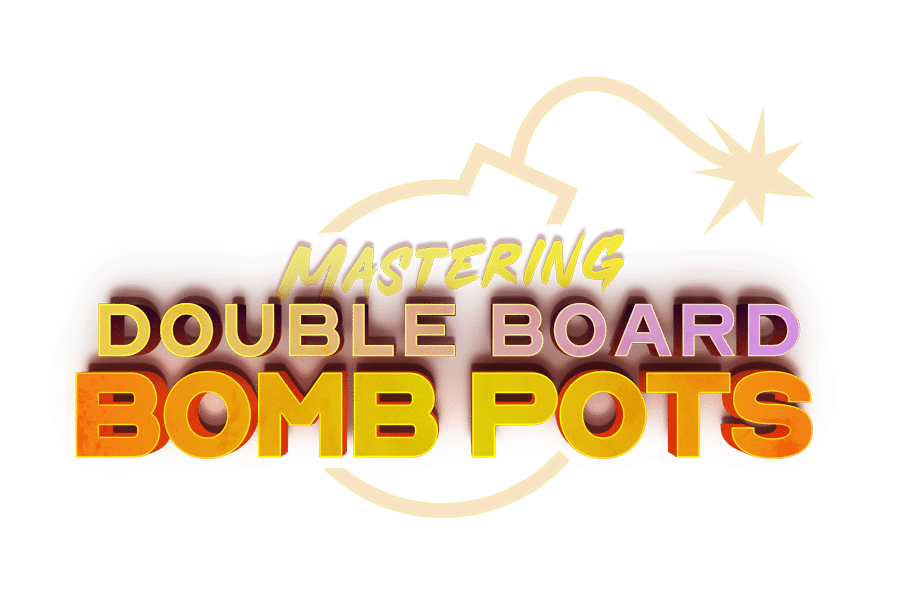
Gain an edge in these MASSIVE POTS
Elevate your game by masterming a crucial format for serious PLO players.

We have another WSOP Double Board Bomb Pot hand analysis coming soon, so stay tuned!



